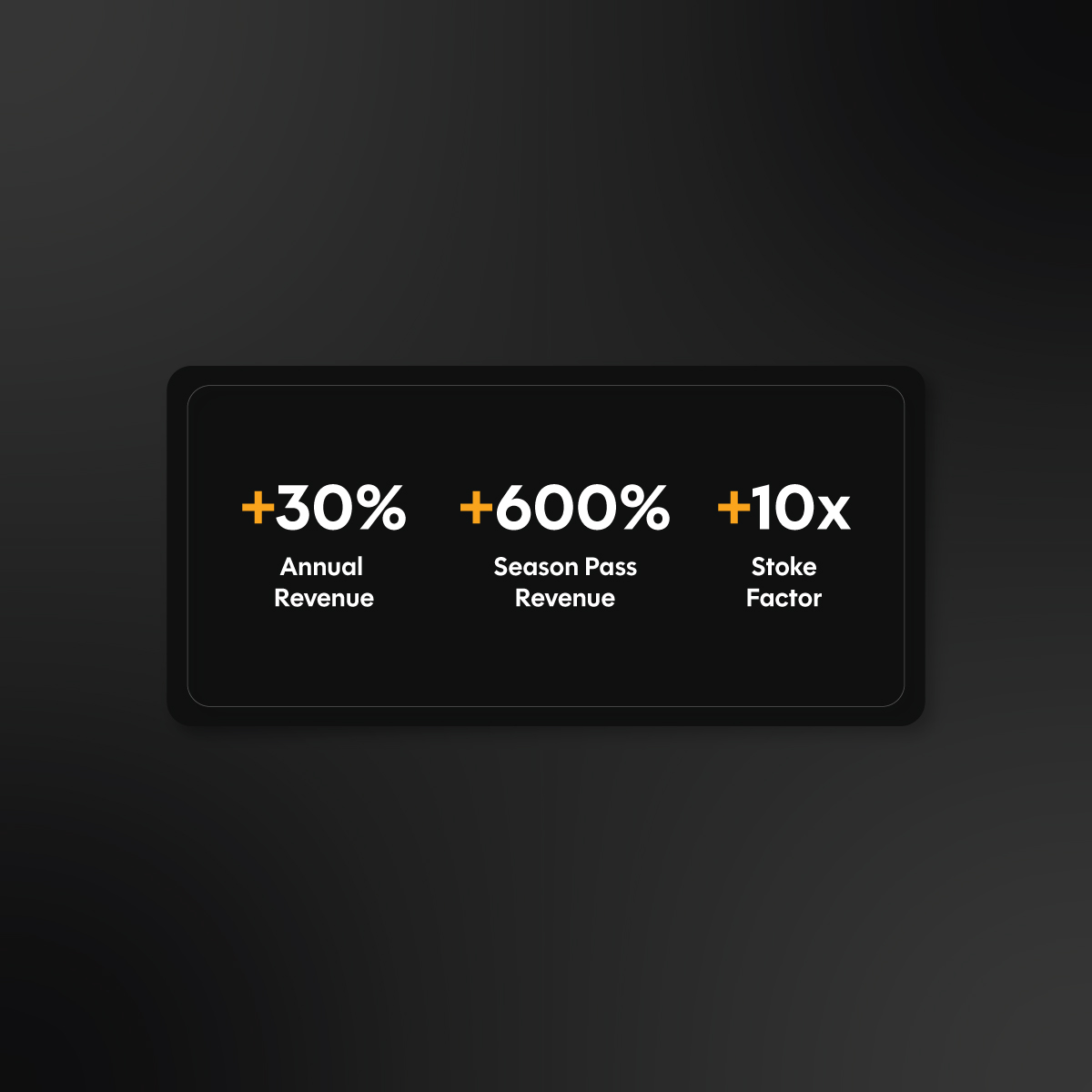A working guide to getting seen, securing clients, and showcasing your designs.
Your creativity deserves to be seen. In a field where visual presence drives decisions and business growth, having the right social media strategy isn’t just helpful—it’s necessary.
Why Social Media Is Essential for Architects in 2025
Social media for architects isn’t just a trend—it’s a modern-day portfolio, network, and business card rolled into one.
For architects, platforms like Instagram and LinkedIn offer more than aesthetic kudos. They’re engines for visibility, credibility, and client acquisition. Whether you’re showcasing a jaw-dropping render or giving behind the scenes of your design process, the right platform helps you connect with your ideal audience.
This isn’t about chasing likes. It’s about building a digital presence that generates real business opportunities. Because when potential clients can see not just what you build but how you think, you’ve already won half the battle.
Know Your Audience and Goals
Start with clarity before you start creating.
Before you start creating content, we recommend you answer two questions:
- Who do I want to reach?
- What do I want them to do?
Once you have those two answered, you can start creating with purpose.
Residential vs. Commercial Clients
The social media strategy that works for residential architects often falls flat for those targeting commercial projects.
Here’s why:
When targeting homeowners, your focus should be on inspiration and relatability. These clients connect with the emotional aspects of design—how spaces make them feel, how design solutions solve everyday personal problems, and the transformation of ordinary spaces into extraordinary ones.
But when you’re targeting commercial developers, they’re looking for your technical skill, process, and ROI. These clients need to see your ability to handle complex projects, meet deadlines, and deliver solutions that align with business objectives. Your content should speak to efficiency, innovation, and bottom-line benefits.
Choose the Right Goal
Your social media content should map to one or more of these objectives:
- Build brand awareness among potential clients
- Generate leads through strong CTAs and community presence
- Showcase your portfolio with process videos, renders, and walkthroughs
Knowing your goal helps you choose the best platform (and the right content mix) for your firm.
Are you trying to fill your pipeline with immediate projects? Or are you positioning yourself as a thought leader in your specialty?
Your answer determines everything from post frequency to content type.
What Platforms Do Architects Use Most?
Not all social media platforms are created equal when it comes to architectural content.
Let’s look at where architects—and their clients—actually spend time online.
These are the top four platforms to lean into for growth and visibility in 2025:
Instagram – Ideal for visual storytelling
Instagram remains the cornerstone of architectural social media because it’s fundamentally visual.
The platform’s focus on images and short videos aligns perfectly with how you can communicate your work.
Aside from looks, Instagram Stories are the perfect format for behind-the-scenes content that humanizes your process and can highlight your personality which will build a personal connection with you and/or the business.
LinkedIn – Best for professional positioning
While less visually oriented than Instagram, LinkedIn offers something invaluable: direct access to decision-makers.
For architects working in commercial, institutional, or public sectors, LinkedIn is where proposals begin.
The platform’s emphasis on professional credentials and thought leadership allows you to showcase not just your portfolio, but your expertise and industry insight.
Pinterest – Great for driving traffic and saving inspiration
Often overlooked, Pinterest functions as a visual search engine rather than a traditional social network.
Its staying power comes from users actively searching for design ideas—precisely when they’re considering hiring an architect.
While it requires less daily management than other platforms, the long-term visibility it provides can generate steady inquiries for years.
TikTok – Powerful for humanizing your process and riding trends
The newest entry in an architect’s social toolkit, TikTok excels at showing the human side of your practice.
Through time-lapse videos, day-in-the-life content, and quick design tips, you can reach younger clients and potential team members who might never encounter your work on traditional platforms.
Each platform serves a slightly different purpose, which is why multi-channel presence matters more than ever.
But don’t spread yourself too thin—master one platform before expanding to others.
Platform-by-Platform Breakdown for Architects
No two platforms are alike. Here’s how to tailor your approach to each one.
Instagram: Your Visual Portfolio
Instagram is where design truly shines. Use it to:
- Showcase works-in-progress and completed builds (if you’re showcasing client work, make sure they’re okay with it before posting)
- Use Reels to speed up time-lapse videos or project tours
- Build authority with thoughtful leadership explaining your vision
The most successful architectural accounts on Instagram don’t just show beautiful final photos—they bring followers along for the journey. Revealing your design process creates deeper connections than polished end results alone.
LinkedIn: Build Authority and Network
LinkedIn might lack Instagram’s visual appeal, but it excels at business development:
- Publish short-form posts or long-form articles on industry trends
- Celebrate milestones like project launches or awards
- Engage with other professionals and local firms to expand reach
The platform’s emphasis on professional credentials makes it ideal for architects targeting commercial, institutional, or corporate clients. Don’t overlook its power as a thought leadership platform where you can demonstrate problem-solving abilities beyond aesthetics.
Pinterest: Drive Discovery and Save Inspiration
Pinterest operates differently from other platforms—it’s a visual search engine:
- Create boards for home office ideas, facades, sustainable materials
- Pin your own blog posts and project imagery with clear titles
- Use Pinterest to feed your website traffic with long-tail visual keywords
Unlike platforms where content disappears quickly, Pinterest posts can drive traffic for years. The key is using descriptive, searchable text with your images and linking back to specific project pages on your website.
Facebook: Build Community, Not Just Presence
While its overall popularity has declined, Facebook remains valuable for local visibility:
- Use Groups and Events to promote design workshops or answer questions related to your field
- Share testimonials from happy clients and time-lapse project videos
- Dive into Meta’s analytics for targeting and promotion
Facebook’s strength lies in its community features and targeting capabilities. For architects focused on residential projects in specific geographic areas, Facebook’s neighborhood groups and local targeting can connect you directly with potential clients.
TikTok: Be Bold, Be Fun, Be Seen
TikTok rewards personality and authenticity over perfection:
- Post site visits with trending audio
- Share “day in the life” content to attract younger clients and collaborators
- Use voiceovers to break down your process in simple, human terms
The platform’s algorithmic distribution means even small accounts can reach large audiences with the right content. For younger architects or firms targeting younger demographics, TikTok offers unparalleled organic reach.
How to Promote Yourself as an Architect
People want to work with people they trust. That starts with personal branding.
In architecture, your personal brand is as important as your portfolio. Clients aren’t just hiring a service—they’re entering a relationship that often spans months or years. Your social media presence needs to reflect the experience of working with you.
Here’s how to put yourself out there without feeling awkward or “salesy”:
- Write a short bio that positions you (think: “Architect obsessed with zero-waste homes.”)
- Don’t overthink it—document, don’t just “create”
- Let your personality shine through. Finished work can look the same to non-architects but personality is what sets you apart
- Be consistent—same logo, same handle, same voice across platforms
The most effective architectural social media doesn’t feel manufactured—it feels like a natural extension of your practice and you. When you share genuine insights, challenges, and victories, you attract clients who value transparency and authenticity.
Building a Smart Promotion Strategy
No fluff. Just smart, sustainable growth.
Having a structured system for social media takes away the guesswork and turns it from an afterthought into something that drives results.
Here’s the system we recommend:
First you need to know about content pillars.
Here are some proven content pillars we regularly refer to:
- Educational content: Share design principles, architectural techniques, and “did you know?” facts about notable buildings that position you as an authority while providing genuine value
- Studio highlights: Showcase your team members, technology investments, and workspace features that differentiate your firm from others in the area
- Client projects and testimonials: Nothing builds trust like seeing real results and hearing real experiences (always with proper consent)
- Community involvement and events: Demonstrate your firm’s values and connection to the local community through public space initiatives, lectures, or participation in design events
- Behind-the-scenes content: Give potential clients a glimpse into daily life at your studio, helping them feel familiar with your design process and working environment before they engage your services
And here’s our recommended weekly flow:
- Monday – Audit & Plan Start your week by looking back before looking forward. What posts performed well last week? Which ones fell flat? This isn’t just about likes—it’s about meaningful engagement and action. Then decide which of your content pillars you’ll focus on this week. Maybe it’s project highlights on Monday, design education on Wednesday, and a behind-the-scenes look on Friday.
- Tuesday – Research & Create This is your content gathering day. Grab interesting architectural statistics for an infographic, write outlines for your design tips, take candid photos around the studio, or record a quick video explaining a common design process. The key is collecting raw material you can refine later.
- Wednesday – Create & Write Now transform those raw social media ideas for architects into finished posts. Design your graphics using a template system like Canva (which has architecture-specific templates), and write your captions with clear value and a specific call to action. Remember that captions should have personality—they’re not technical specifications!
- Thursday – Write & Schedule Finalize your captions, making sure they align with your brand voice and contain relevant hashtags if you’re using platforms like Instagram. Then use a scheduling tool like Later, Hootsuite, or Meta Business Suite to queue everything up. Scheduling in batches saves enormous time compared to posting manually each day.
- Friday – Review & Prep Take 15 minutes to review your basic metrics from the previous week’s posts. Look specifically at reach (how many people saw your content), saves (indicating high-value content), and clicks (showing people took action). Make notes about what to improve next week, and capture any content ideas for the following week while they’re fresh in your mind.
This system requires about 2-3 hours total per week, but those hours are incredibly productive because they’re focused and systematic.
We recommend handing this to your most competent employee with some sort of compensation or career growth angle so they don’t feel like they’re just getting more on their plate.
The goal? Build a pipeline of posts.
But remember—visibility without value is just noise. Every post should serve a purpose in your larger business strategy.
What separates successful architects on social media isn’t their follower count—it’s their conversion rate.
Focus on attracting the right audience, not the largest one.
Architect Tools That Make Social Posting Easier
Your design software is full of content opportunities.
The tools you already use daily contain a gold mine of social content. Programs like AutoCAD, Revit, and SketchUp aren’t just for project work. They’re also powerful content creation tools when approached creatively.
Here’s how to use them for social media:
- Export clean renders and walkthroughs for Reels
- Use screen recordings of 3D models for TikToks
- Compare designs with before-and-after overlays
And don’t forget your daily tech:
- Cellphones (for video + BTS footage)
- Ring lights and tripods (for better framing)
- Google Drive or Dropbox (for content organization)
The best social media strategies integrate content creation into your existing workflow. When you can capture content during your regular design process, maintaining a consistent social presence becomes sustainable.
Measuring What Matters
You can’t grow what you don’t track.
The architects seeing the most social media success don’t just post and hope. They analyze results and adjust accordingly. Different metrics matter depending on your goals.
Focus on KPIs that tie directly to your business goals:
- Engagement (likes, shares, comments)
- Follower growth (especially in your service area)
- Inbound messages or project inquiries
- Website traffic from social media
Use tools like Meta Business Suite, LinkedIn Analytics, and Google Analytics to see what’s working—and adjust accordingly. The data often reveals surprising patterns about what content resonates most with your audience.
Don’t be afraid to experiment, but always tie your experiments back to measurable outcomes. Social media should generate tangible business results, not just vanity metrics.
Final Thoughts: Start Where You Are
There’s no perfect time to start. So start now—with the tools you already have.
Social media doesn’t need to be overwhelming. With a focused plan and a bit of creativity, you can turn your online presence into a lead-generating, credibility-building, brand-defining machine.
The architects who thrive on social media aren’t necessarily the ones with the biggest budgets or the most polished content. They’re the ones who show up consistently, share authentically, and focus on providing genuine value to their audience.
Your first posts won’t be perfect—and that’s completely fine. What matters is taking that first step and committing to gradual improvement. Your social media presence, like your architectural practice, will evolve and refine over time.
Ready to Amplify Your Social Strategy?
Let’s turn your design brilliance into digital momentum.
Book a brainstorm today and walk away with a custom strategy tailored to your architecture practice.










